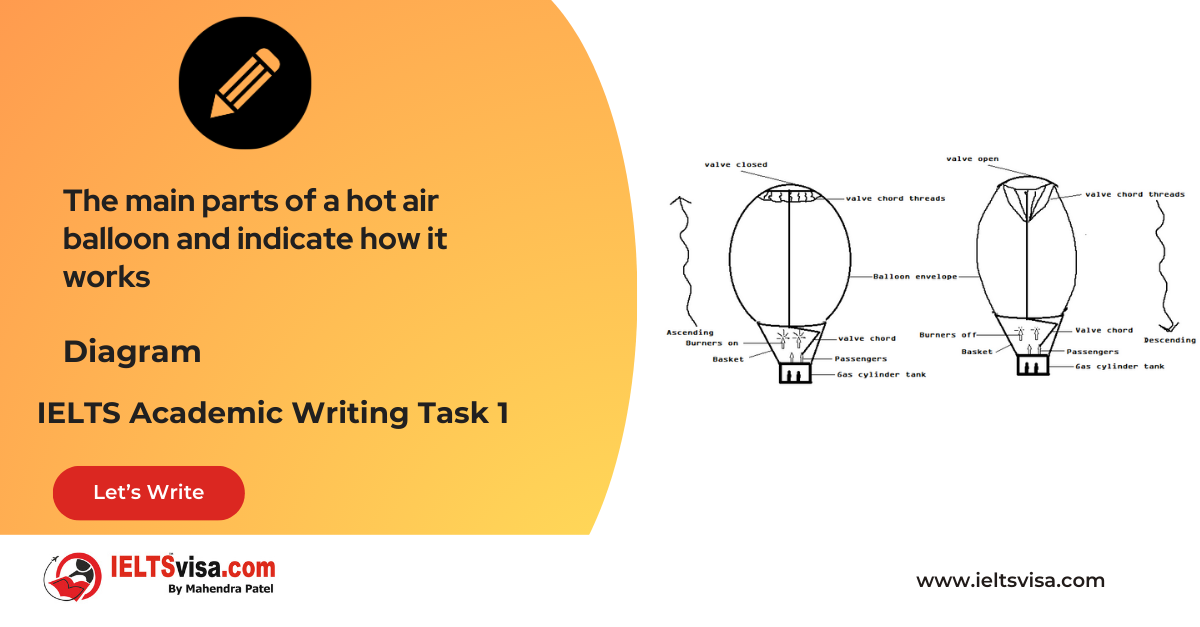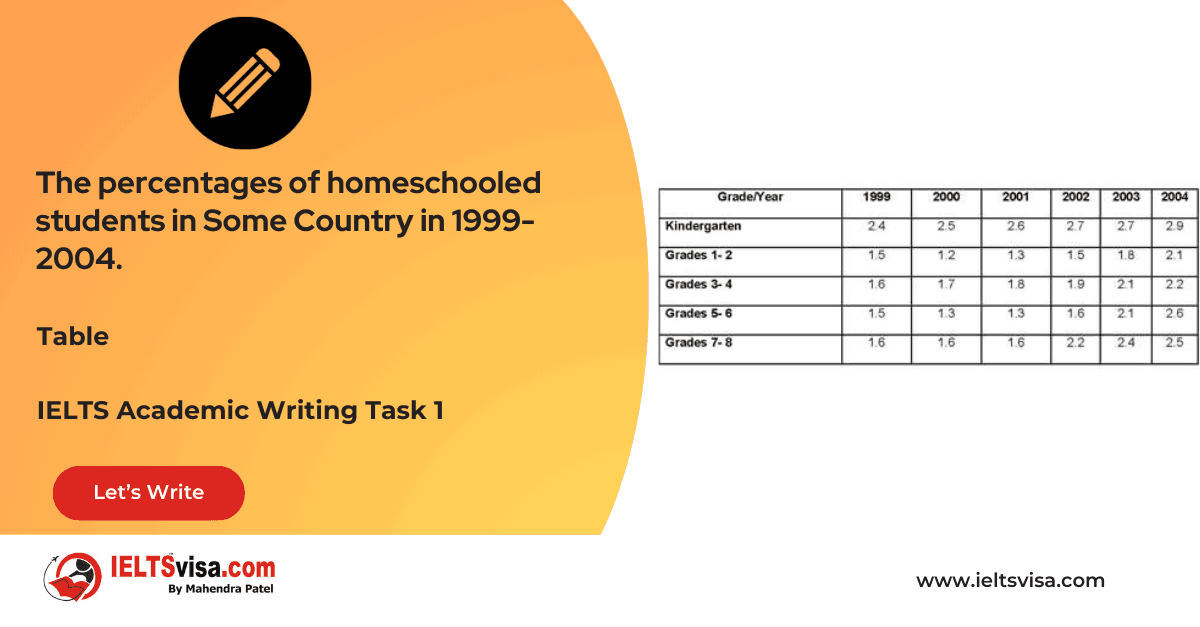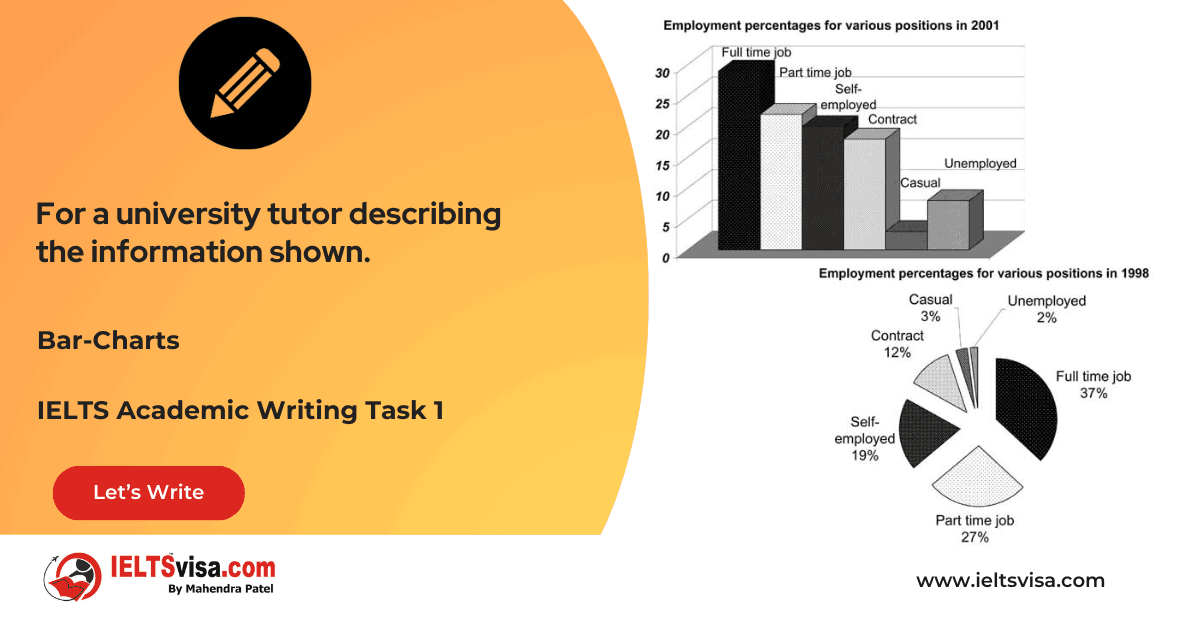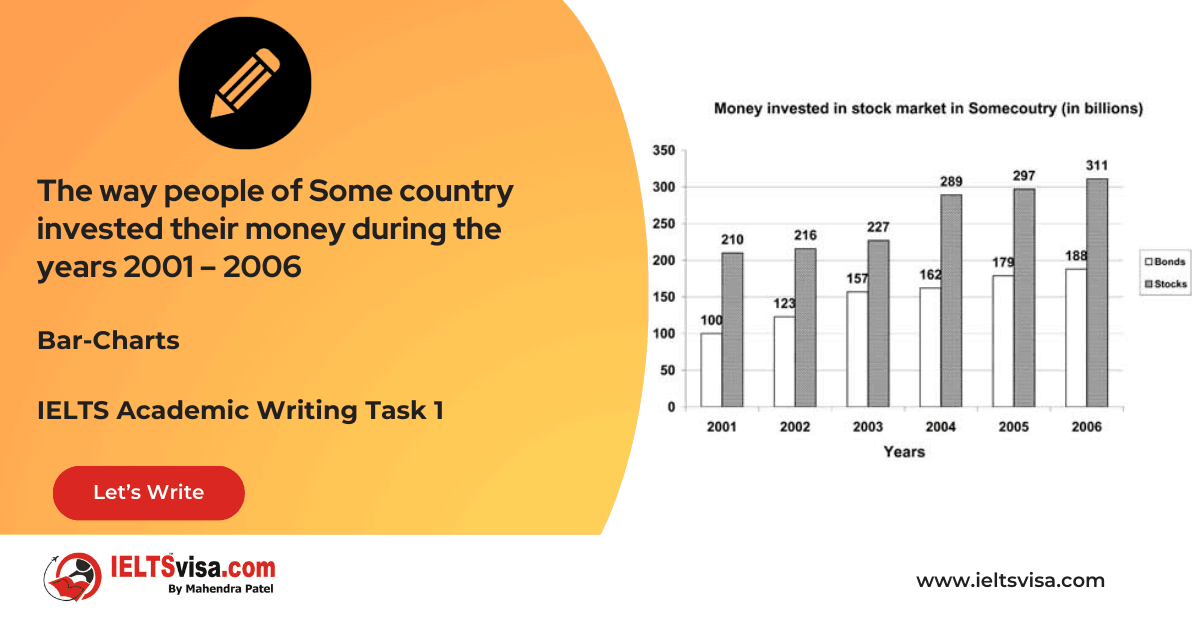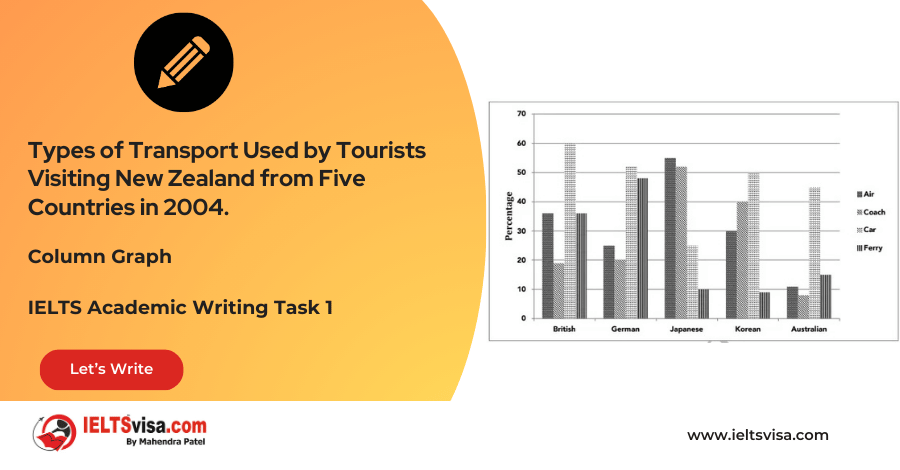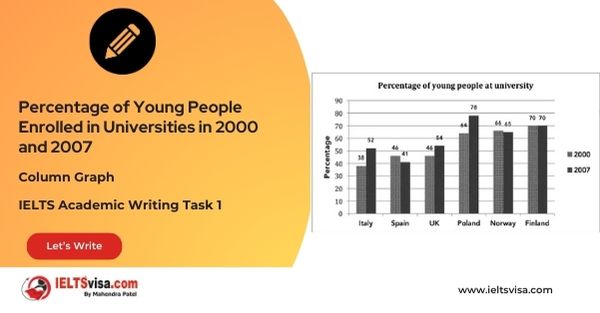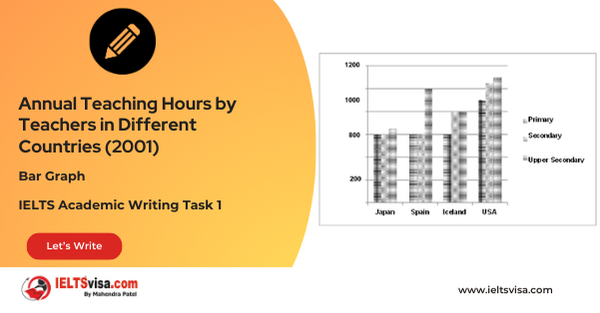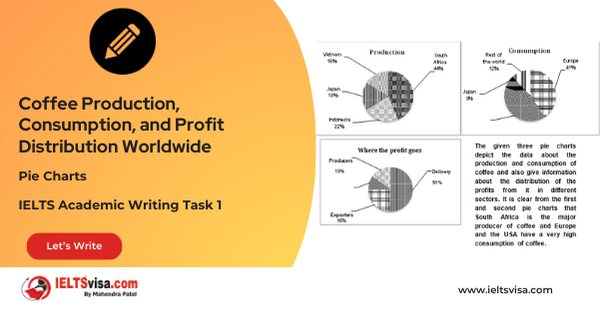Language to Describe Changes
Lexical Resource & Grammatical Range and AccuracyIELTS Academic Writing Task 1
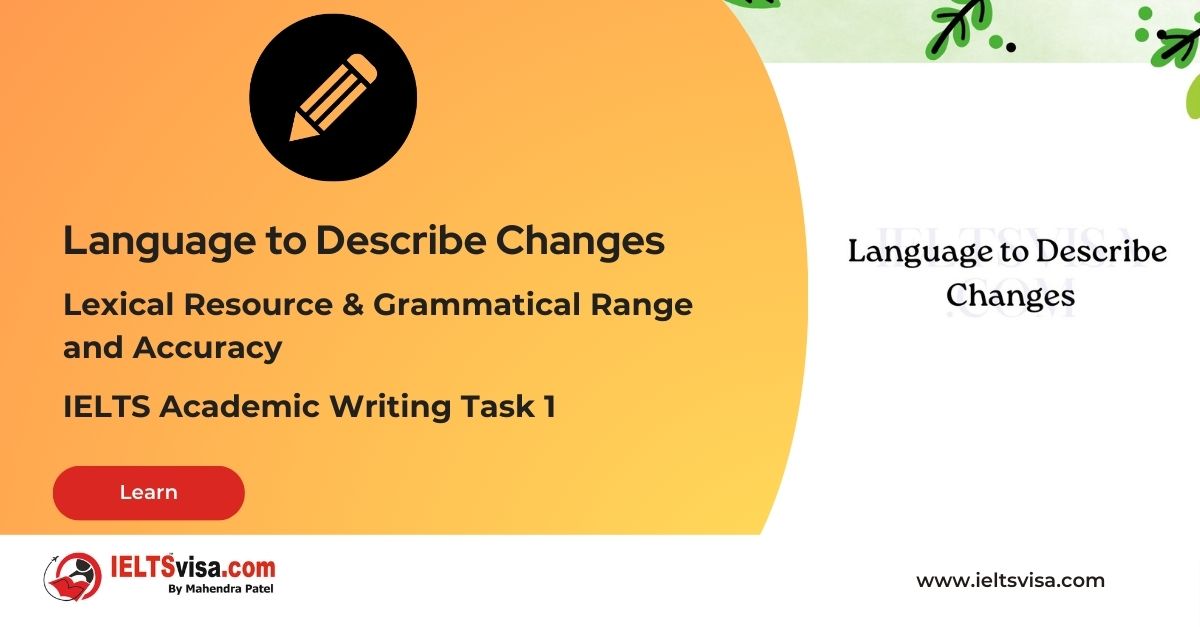
In the IELTS Academic Writing Task 1, describing changes accurately and effectively is crucial for showcasing your language proficiency and scoring well in the Lexical Resource and Grammatical Range and Accuracy criteria.
This task requires test takers to interpret and report on visual information, such as graphs, charts, and diagrams, which often depict various changes over time.
In this article, we will explore the language and vocabulary that can be used to describe changes, accompanied by examples and answers to help you excel in this task.
1. Increasing Trends:
When describing increasing trends, it is important to use precise language to convey the growth or upward movement. Here are some language features you can employ:
a. Verb Phrases:
Use verb phrases to describe the action of the increase.
For example:
Original Sentence:
The number of students rose.
Revised Sentence:
There was a significant rise in the number of students.
In this revised sentence, the verb phrase “significant rise” provides a more specific and descriptive depiction of the increasing trend.
b. Adverbs and Adjectives:
Incorporate adverbs and adjectives to enhance the description of the increasing trend. For instance:
Original Sentence:
The price increased.
Revised Sentence:
The price increased significantly.
Here, adding the adverb “significantly” emphasizes the magnitude of the increase.
c. Nouns and Noun Phrases:
Use nouns and noun phrases to clearly and concisely describe the increasing trend. Consider the following example:
Original Sentence:
The temperature went up.
Revised Sentence:
There was a marked increase in temperature.
In this revised sentence, the noun phrase “marked increase” precisely conveys the upward movement of the temperature.
2. Decreasing Trends:
When describing decreasing trends, it is crucial to use appropriate language to accurately convey the decline or downward movement. Here are some language features you can utilize:
a. Verb Phrases:
Use verb phrases to describe the action of the decrease.
For example:
Original Sentence:
The sales dropped.
Revised Sentence:
There was a significant drop in sales.
In this revised sentence, the verb phrase “significant drop” provides a more specific and descriptive depiction of the decreasing trend.
b. Adverbs and Adjectives:
Incorporate adverbs and adjectives to enhance the description of the decreasing trend. For instance:
Original Sentence:
The production declined.
Revised Sentence:
The production declined significantly.
Here, the addition of the adverb “significantly” emphasizes the magnitude of the decline.
c. Nouns and Noun Phrases:
Use nouns and noun phrases to clearly and concisely describe the decreasing trend. Consider the following example:
Original Sentence:
The population went down.
Revised Sentence:
There was a sharp decrease in the population.
In this revised sentence, the noun phrase “sharp decrease” precisely conveys the downward movement of the population.
3. Fluctuating Trends:
Using appropriate language to convey the variation or inconsistent movement when describing fluctuating trends is important. Here are some language features you can employ:
a. Verbs:
Use verbs to describe the fluctuation or variation. For example:
Original Sentence:
The prices changed.
Revised Sentence:
The prices exhibited significant fluctuations.
In this revised sentence, the verb “exhibited” and the noun “fluctuations” accurately depict the fluctuating trend.
b. Adverbs and Adjectives:
Incorporate adverbs and adjectives to enhance the description of the fluctuating trend. For instance:
Original Sentence:
The sales varied.
Revised Sentence:
The sales showed considerable variations.
Here, the adjectives “considerable” and “variations” effectively convey the degree and nature of the fluctuations.
c. Nouns and Noun Phrases:
Use nouns and noun phrases to clearly and concisely describe the fluctuating trend. Consider the following example:
Original Sentence:
The temperature fluctuated.
Revised Sentence:
There were notable temperature fluctuations.
In this revised sentence, the noun phrase “notable temperature fluctuations” precisely conveys the temperature variation.
In conclusion, effectively describing changes in the IELTS Academic Writing Task 1 is essential for showcasing your language skills and scoring well in the Lexical Resource and Grammatical Range and Accuracy criteria. You can accurately and vividly depict increasing, decreasing, and fluctuating trends by utilizing appropriate verbs, adverbs, adjectives, nouns, and noun phrases.
Practice incorporating these language features into your writing; remember to proofread for clarity and coherence.
With consistent effort, you will enhance your performance in Task 1 and achieve success in your IELTS examination.




Our Books
Master IELTS Speaking Part 1
IELTS Writing Task 1 Book
IELTS Writing Task 2 Book
Practice IELTS Other Modules
IELTS Listening
The IELTS Listening test assesses how well you can understand spoken English in various contexts. It lasts about 30 minutes and is divided into four sections with a total of 40 questions. The listening tasks become increasingly difficult as the test progresses.
IELTS Academic Reading
The IELTS Academic Reading section assesses your ability to understand and interpret a variety of texts in academic settings. It is designed to evaluate a range of reading skills, including skimming for gist, reading for main ideas, reading for detail, understanding inferences, and recognizing a writer's opinions and arguments.
IELTS Speaking
The IELTS Speaking test assesses your ability to communicate in English on everyday topics. It lasts 11-14 minutes and consists of three parts: introduction, cue card, and a discussion based on the cue card topic.
IELTS General Reading
IELTS General Reading tests your ability to understand and interpret various types of texts. Here are some key areas and types of content you can expect to encounter in the reading section, along with tips for effective preparation.
IELTS Academic Writing Task 1
In IELTS Academic Writing Task 1, you are presented with a visual representation of information, such as graphs, charts, tables, or diagrams, and you are required to summarize, compare, or explain the data in your own words.
IELTS General Writing Task 1
In IELTS General Writing Task 1, you are required to write a letter based on a given situation. The letter can be formal, semi-formal, or informal, depending on the prompt. Here’s a breakdown of the key components to include in your letter
IELTS Academic Writing Task 2
In IELTS Academic Writing Task 2, you are required to write an essay in response to a question or topic. Here’s a guide to help you understand the essential elements of this task
IELTS Exam Tips
To succeed in the IELTS exam, practice regularly, familiarize yourself with the test format, improve your vocabulary, develop time management skills, and take mock tests to build confidence.
Grammer for IELTS
Grammar is the foundation of effective communication in English. Understanding tense usage, subject-verb agreement, and sentence structure enhances clarity and coherence in writing and speaking.
Vocabulary for IELTS
Vocabulary plays a crucial role in the IELTS (International English Language Testing System) exam, especially in the Speaking and Writing sections. Here’s an overview of why vocabulary is important and how it impacts your performance
RECENT IELTS SAMPLES QUESTIONS AND ANSWERS
Task 1 – Diagram – A conference hall built in 1981 and planned for 2020
20:00 Start Pause Stop [df_adh_heading title_infix="IELTS Writing Task 1 Question" use_divider="on"...
Task 1 – Table – The percentages of homeschooled students in Some Country in 1999-2004.
20:00 Start Pause Stop [df_adh_heading title_infix="IELTS Writing Task 1 Question" use_divider="on"...
Task 1 – Table – For a university tutor describing the information shown.
20:00 Start Pause Stop [df_adh_heading title_infix="IELTS Writing Task 1 Question" use_divider="on"...
Task 1 – Bar-Charts – The way people of Some country invested their money during the years 2001 – 2006
20:00 Start Pause Stop [df_adh_heading title_infix="IELTS Writing Task 1 Question" use_divider="on"...
Task 1 – Diagram – Rainwater Harvesting and Conversion to Drinking Water in an Australian Town.
20:00 Start Pause Stop [df_adh_heading title_infix="IELTS Writing Task 1 Question" use_divider="on"...
Task 1 – Column graph – Percentage of Young People Enrolled in Universities in 2000 and 2007.
20:00 Start Pause Stop [df_adh_heading title_infix="IELTS Writing Task 1 Question" use_divider="on"...
Task 1 – Bar Graph – Annual Teaching Hours by Teachers in Different Countries (2001)
20:00 Start Pause Stop [df_adh_heading title_infix="IELTS Writing Task 1 Question" use_divider="on"...
Task 1 – Pie Charts – Coffee Production, Consumption, and Profit Distribution Worldwide
20:00 Start Pause Stop [df_adh_heading title_infix="IELTS Writing Task 1 Question" use_divider="on"...
Task 1 – Column graph – Types of Transport Used by Tourists Visiting New Zealand from Five Countries in 2004.
20:00 Start Pause Stop [df_adh_heading title_infix="IELTS Writing Task 1 Question" use_divider="on"...

